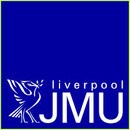1. Ceglia L. and Harris S. S. Vitamin D and its role in skeletal muscle. Calcified tissue international. 2013;
92(2):151–162.
2. Heaney R. P. and Holick M. F. Why the IOM recommendations for vitamin D are deficient. J Bone Miner Res. 2011; 26(3):455–457.
3. Lehtonen-Veromaa M. et al. Physical activity and bone mineral acquisition in peripubertal girls. Scand J Med Sci Sports. 2000; 10(4):236–243.
4. Ducher G. et al. Vitamin D status and musculoskeletal health in adolescent male ballet dancers a pilot study. J Dance Med Sci. 2011; 15(3):99–107.
5. Hamilton B. et al. Vitamin D deficiency is endemic in Middle Eastern sportsmen. Public Health Nutr. 2010; 13(10):1528–1534.
6. Halliday T. M. et al. Vitamin D status relative to diet, lifestyle, injury, and illness in college athletes.
Med Sci Sports Exerc. 2011; 43(2):335–343.
7. Lovell G. Vitamin D status of females in an elite gymnastics program. Clin J Sport Med. 2008; 18(2):
159–161.
8. Morton J. P. et al. Seasonal variation in vitamin D status in professional soccer players of the English Premier League. Appl Physiol Nutr Metab. 2012; 37(4):798–802.
9. Bescós García R. and Rodríguez Guisado F. A. Low levels of vitamin D in professional basketball players after wintertime: relationship with dietary intake of vitamin D and calcium. Nutr Hosp. 2011; 26(5):945–951.
10. Close G. L. et al. Assessment of vitamin D concentration in non-supplemented professional athletes and healthy adults during the winter months in the UK: implications for skeletal muscle function. J Sports Sci. 2013; 31(4):344–353.
11. Wilson G. et al. Markers of bone health, renal function, liver function, anthropometry and perception of mood: a comparison between Flat and National Hunt Jockeys. Int J Sports Med. 2013; 34(5):453–459.
12. Wolman R. et al. Vitamin D status in professional ballet dancers: Winter vs. summer. J Sci Med Sport. Published online February 2013.
13. Nibbelink K. A. et al. 1,25(OH)2-vitamin D3 actions on cell proliferation, size, gene expression, and receptor localization, in the HL-1 cardiac myocyte. J Steroid Biochem Mol Biol. 2007; 103(3–5):533–537.
14. Girgis C. M. et al. The roles of vitamin D in skeletal muscle: form, function, and metabolism. Endocr Rev. 2013; 34(1):33–83.
15. Srikuea R. et al. VDR and CYP27B1 are expressed in C2C12 cells and regenerating skeletal muscle: potential role in suppression of myoblast proliferation. Am J Physiol Cell Physiol. 2012; 303(4):396–405.
16. Stratos I. et al. Vitamin D increases cellular turnover and functionally restores the skeletal muscle after crush injury in rats. Am J Pathol. 2013; 182(3):895–904.
17. Garcia L. A. et al. 1,25(OH)(2)vitamin D(3) enhances myogenic differentiation by modulating the expression of key angiogenic growth factors and angiogenic inhibitors in C(2)C(12) skeletal muscle cells.
J Steroid Biochem Mol Biol. 2013; 133:1–11.
18. Wicherts I. et al. Vitamin D status predicts physical performance and its decline in older persons. J Clin Endocrinol Metabol. 2007; 92:2058–2065.
19. Mowe M. et al. Low serum calcidiol concentration in older adults with reduced muscular function. J Am Geriatr Soc. 1999; 47:220–226.
20. Houston D. et al. Association between vitamin D status and physical performance: The InCHIANTI Study. J Gerontol. 2007; 62A:440–446.
21. Bischoff-Ferrari H. et al. Higher 25-hydroxyvitamin D concentration are associated with better lower-extremity function in both active and inactive persons aged >60y. Am J Clin Nutr. 2004; 80:752–758.
22. Bischoff H. et al. Muscle strength in the elderly: its relation to vitamin D Metabolites. Arch Phys Med Rehab. 1999; 80:54–58.
23. Visser M. et al. Low Vitamin D and high parathyroid hormone levels as determinants of loss of muscle strength and muscle mass (Sarcopenia): The Longitudinal Aging Study Amsterdam. J Clin Endocrinol Metabol. 2003; 88:5766–5772.
24. Bischoff H. et al. Effects of vitamin D and calcium supplementation on falls: a randomized controlled Trial. J Bone Min Res. 2003; 18:343–351.
25. Gerdhem P. et al. Association between 25-hydroxy vitamin D levels, physical activity, muscle strength and fractures in the prospective population-based OPRA study of elderly women. Osteoporosis Int. 2005; 16:1425–1431.
26. Bunout D. et al. Effects of vitamin D supplementation and exercise training on physical performance in Chilean vitamin D deficient elderly subjects. Exp Gerontol. 2006; 41:746–752.
27. Dhesi J. et al. Vitamin D supplementation improves neuromuscular function in older people who fall.
Age Ageing. 2004; 33:589–595.
28. Verhaar H. et al. Muscle strength, functional mobility and vitamin D in older women. Ageing Clin Exp Res. 2000; 12:455–460.
29. Lagari V et al. The role of vitamin D in improving physical performance in the elderly. J Bone Miner Res. Published online April 2013.
30. Heaney R. P. et al. Vitamin D3 is more potent than vitamin D2 in humans. The Journal of clinical endocrinology and metabolism. 2011; 96(3):447–452.
31. Watkins C. M. and Lively M. W. A review of vitamin d and its effects on athletes. Phys Sportsmed. 2012; 40(3):26–31.
32. Institute of Medicine. Dietary Reference Intakes for calcium and vitamin D. Report Brief. November 2010.
33. Glade M. J. A 21st century evaluation of the safety of oral vitamin D. Nutrition. 2012; 28(4):344–356.
 Daniel J. Owens and Graeme L. Close, Liverpool John Moores University, Research Institute for Sport and Exercise Science, Liverpool, United Kingdom
Daniel J. Owens and Graeme L. Close, Liverpool John Moores University, Research Institute for Sport and Exercise Science, Liverpool, United Kingdom